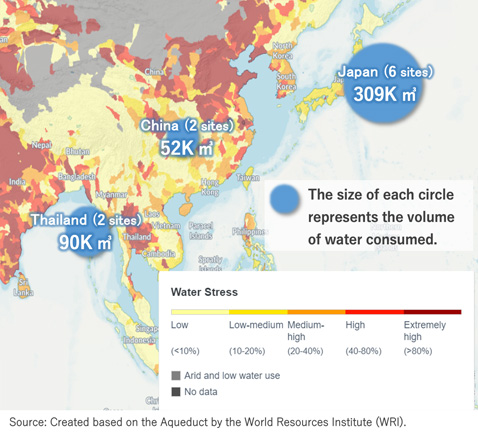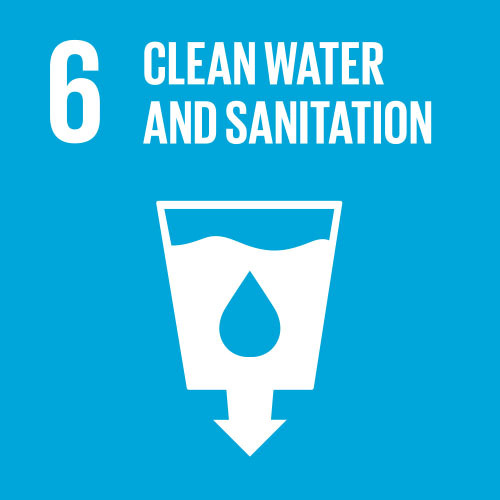
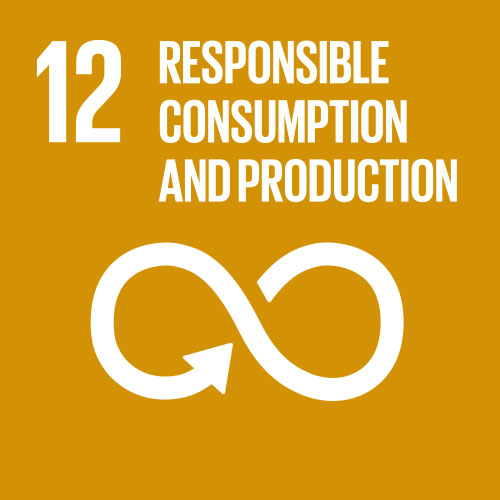
Resource Circulation
Our Concept and Policy of Resource Circulation
Resource recycling is a crucial management issue for manufacturers that rely
on resources to provide products and services, and their responsibility to
contribute to a “Material-Cycle Society ” is becoming
increasingly significant. In recent years, there has also been a growing
call for a shift to a circular economy.
SII utilizes various resources, including mineral resources and plastics for
products, biological resources such as wood and paper, and water resources
in the production process. As part of our environmental policy, we assert
that “Because we recognize the limits of our precious natural resources, we
are increasing our efforts to reuse and recycle every resource possible.” We
believe it is essential to utilize resources effectively and reduce waste
throughout the entire product lifecycle, from raw material extraction to
disposal and recycling, not just during the manufacturing and sales
stages.
To this end, we adhere to the 3R concept by making thorough and efficient
use of resources during the upstream and manufacturing stages. We prioritize
material reuse whenever possible, and when disposal is necessary, we aim to
minimize the amount sent to final disposal sites by partnering with
recycling organizations to manage waste effectively.
Additionally, from the product planning and design stage, we strive to
create products that are not only smaller and lighter with extended
lifespans but also promote efficient resource use and recycling among our
customers and end users. Furthermore, we are promoting the use of recycled
materials and recycling, while ensuring that thorough quality checks of
recycled materials are conducted before their use.
Waste
FY2023 Summary
In FY2023, we maintained our commitment to resource recycling by increasing
the efficiency of material use, downsizing products, and reusing cleaning
agents in line with the 3R principles.
At our Japanese sites, about 80% of waste consists of general waste, sludge,
waste plastic, and scrap metal. In FY2023, the total waste generated
increased by 95 tons compared to the previous year, primarily due to an
increase in scrap metal from the disposal of production facilities and other
items. However, the recycling rate improved by 10 percentage points. At
international sites, metal scrap and waste liquids account for about 80% of
the waste generated. In FY2023, the total waste generated was reduced by 587
tons, largely due to a significant decrease in metal scrap resulting from a
decline in production.
Amount of Waste Generated and Recycling Rate at Sites in Japan
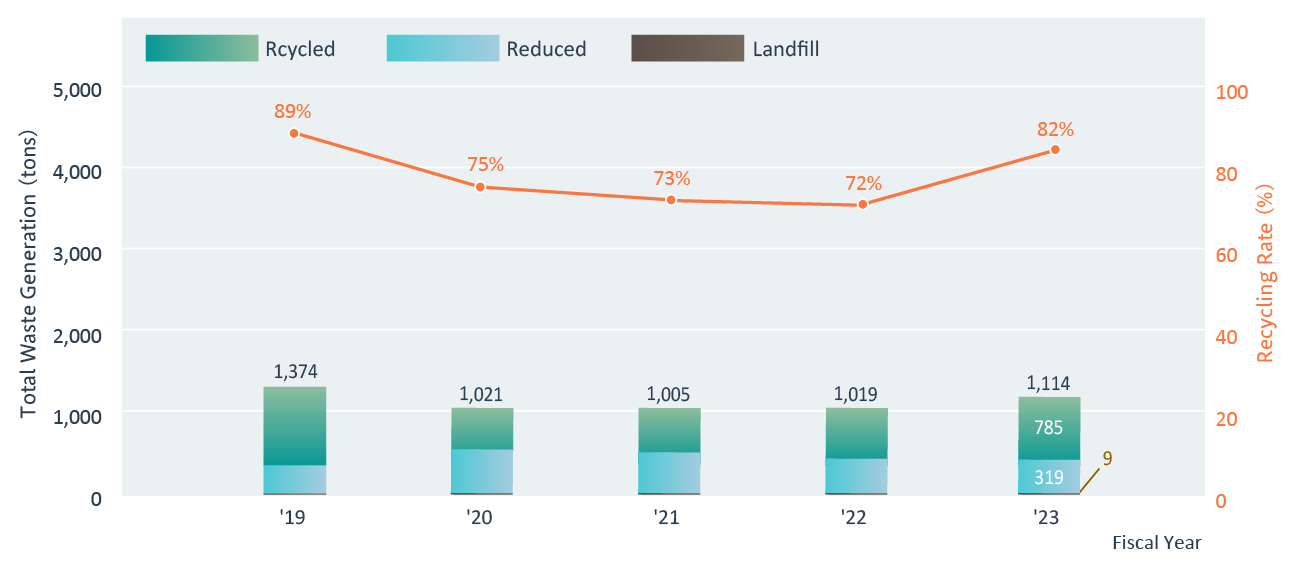
|
Total amount of waste generated at sites in Japan: 1,114 tons |
95 tons increase, or +9% from FY 2022 |
|
Emissions include valuable resources. The total of emissions and breakdown may not match due to fractional amounts. |
|
Amount of Waste Generated and Recycling Rate at Sites outside Japan
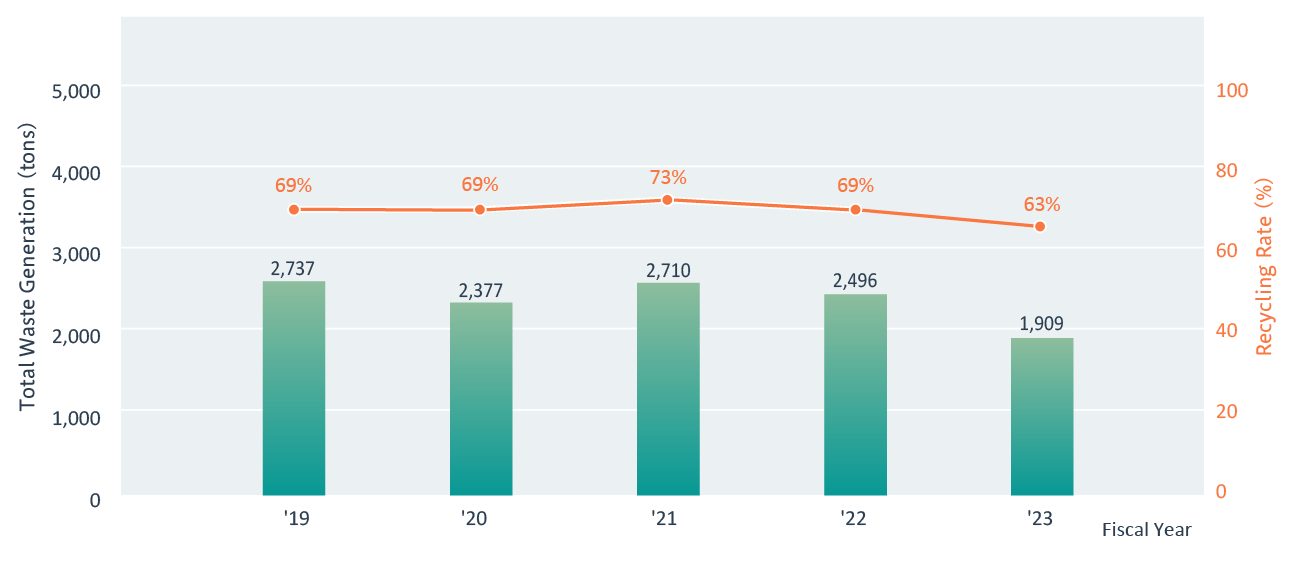
|
Total amount of waste generated at sites outside Japan: 1,909 tons |
587 tons decrease, or -24% from FY 2022 |
|
Emissions include valuable resources. The total of emissions and breakdown may not match due to fractional amounts. |
|
Collection and Recycling
For effective use of resources, we promote the collection and recycling of used products and consumables.
| Products | Industry Groups |
|---|---|
| Button Battery | Button Battery Recycling Promotion Center established in Battery Association of Japan |
| Small Rechargeable Batteries | Japan Portable Rechargeable Battery Recycling Center (JBRC) |
| Packaging | The Japan Containers and Packaging Recycling Association |
Water Resources
FY2023 Summary
Recognizing water as a precious natural resource, SII is committed to the
3Rs of water resources. In addition to reducing water withdrawal, we are
actively promoting the recycling of water used in manufacturing
processes.
In FY2023, water withdrawal at Japanese sites increased by 5%, while at
international sites it decreased by 7% compared to the previous year.
As a new initiative, we conducted water risk assessments at all SII
manufacturing sites, and the Seiko Group underwent third-party verification
of water withdrawal.
Target
In alignment with Seiko Group’s targets, we aim to reduce water withdrawal
per unit of sales to below the base year level (0.33 thousand m³/100 million
yen in FY2021) for each fiscal year from FY2024 to FY2026.
We will continue to strive for the effective use of water resources and will
implement reduction measures in a phased approach.
Changes in Water Withdrawal Volume at Japan Sites
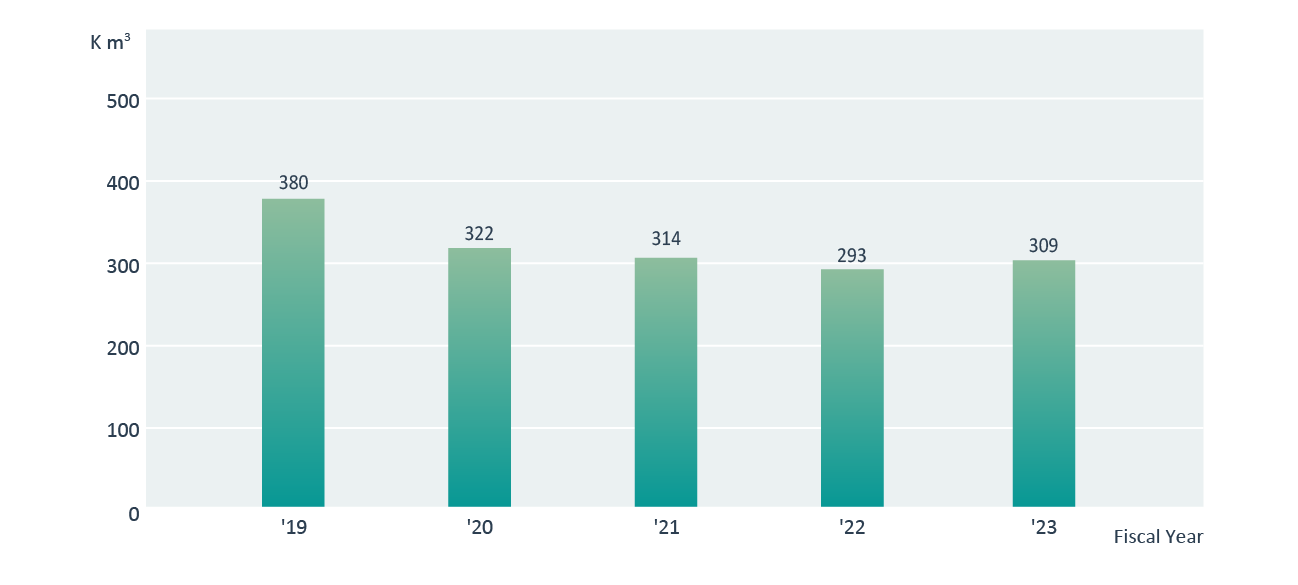
| Japan sites: 309K m³ | 16K m³ increase, or +16% from FY 2022 |
| The disparity may not align with the differences in graph values due to fractional processing. | |
Changes in Water Withdrawal Volume at International Sites
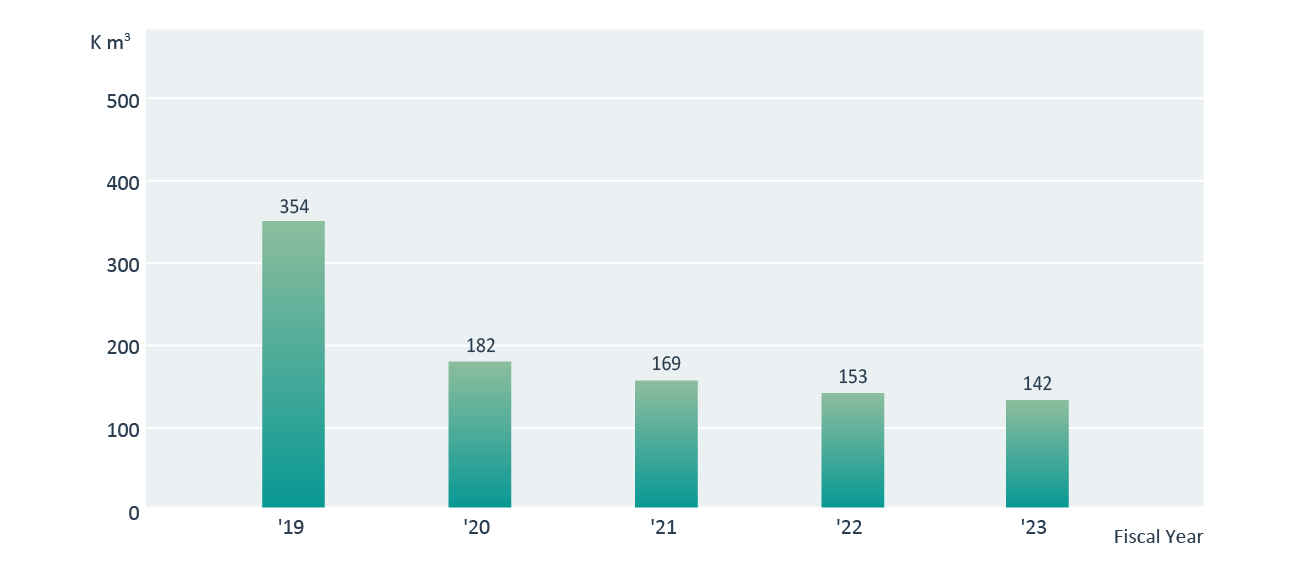
| International Sites: 142K m³ | 11K m³ decrease, or -7% from FY 2022 |
| The disparity may not align with the differences in graph values due to fractional processing. | |
Recycling Pure Water
SII Crystal Technology Inc. incorporates pure water recycling into its cleaning process for parts. After cleaning, the water is collected and treated through a recycling system, allowing it to be reused in subsequent cleaning cycles. This initiative enables the recycling and reuse of approximately 17,600 m³ of water annually.
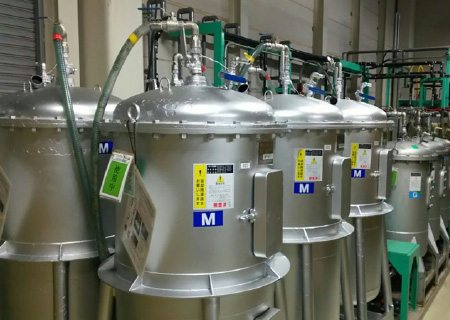
Water Risk
It is essential to consider water risk from multiple perspectives, including
water withdrawal risk, flood risk, the impact of stricter drainage
regulations, and the risk of rainwater runoff contaminated with hazardous
substances.
SII conducted internal assessments at all Group production sites, using the
Aqueduct tool developed by the World Resources Institute (WRI) and the Water
Risk Filter from the World Wildlife Fund (WWF), two standard tools for water
risk assessment. These investigations covered not only the current
situation, but also projections up to the year 2030. They revealed that four
international sites (two in Thailand and two in China) are located in
regions with high water stress. The total water withdrawal at these sites in
fiscal year 2022 amounted to 189K m³, accounting for 24.9% of the total
water withdrawal of our Group (based on FY2022 figures).
Furthermore, each of SII’s units is currently identifying risks related to
floods and other critical events, both for themselves and their primary
suppliers, and formulating appropriate responses.
We will continue our efforts to understand and address water risks
throughout our manufacturing facilities and supply chain.
* Sites with a risk rating of High or Extremely High in WRI Aqueduct's Water Stress indicator.
